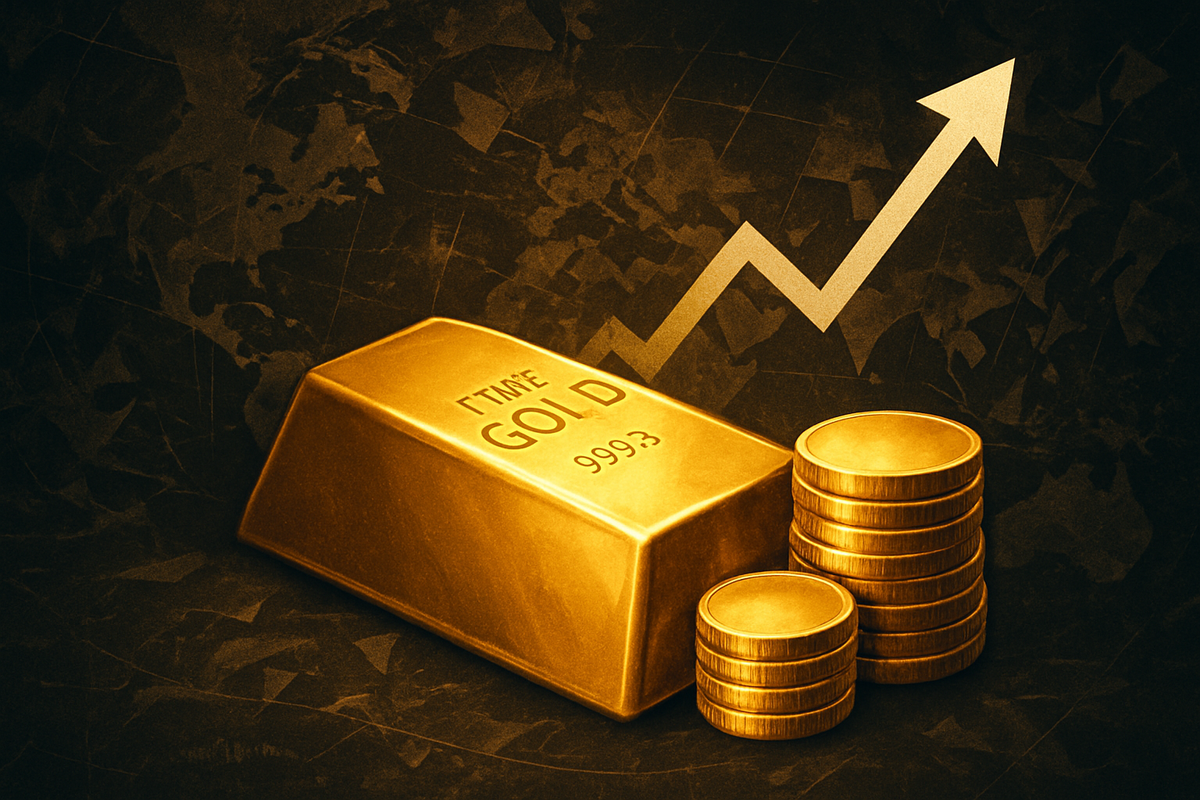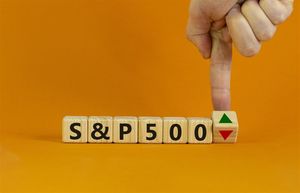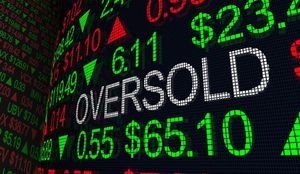
Gold has embarked on a historic rally, shattering the unprecedented $4,000 per ounce threshold as of October 8, 2025, and reaching peaks of up to $4,052.44. This monumental surge marks a year-to-date increase of approximately 50% to 55.36%, positioning the precious metal as the leading asset class and one of the strongest performers in recent financial history. The rally signifies a profound shift in investor sentiment, driven by a complex interplay of escalating global economic uncertainties, persistent geopolitical tensions, and strategic monetary policy adjustments, reinforcing gold's enduring role as a premier safe-haven asset and a hedge against inflation.
This unprecedented appreciation reflects a deep-seated lack of confidence in traditional financial systems and a widespread flight to safety. Investors, from central banks to retail participants, are increasingly seeking tangible stores of value amidst a landscape fraught with political instability, currency devaluation fears, and concerns over the credibility of central bank policies. The rapid ascent of gold prices is not merely a market phenomenon but a powerful barometer, signaling profound anxieties about the future of global economic stability and the enduring appeal of gold as the ultimate financial refuge.
The Perfect Storm: Unraveling Gold's Historic Ascent
The current gold price surge to over $4,000 per ounce is the culmination of a "perfect storm" of factors, marking the first time the metal has crossed this psychological and economic barrier. This represents a nearly 50% increase in 2025 alone, building on a significant 27% rise in 2024. The velocity of this rally is exceptional, achieving in months what previously took years during past bull markets. Key drivers include persistent global political instability, such as the ongoing U.S. government shutdown, political unrest in France and Japan, and the continuing Russia-Ukraine conflict, all of which have significantly heightened market anxiety and driven investors towards gold.
Monetary policy expectations have also played a pivotal role. Anticipations of potential interest rate cuts by major central banks, particularly the Federal Reserve, have reduced the attractiveness of traditional yield-bearing assets like bonds, making non-yielding gold comparatively more appealing. Compounding this is a comparatively weaker U.S. dollar, which makes gold more affordable for international buyers, further fueling global demand. Furthermore, persistent inflation concerns continue to erode purchasing power and currency stability, leading a broad spectrum of investors, including central banks and retail individuals, to seek gold as a hedge and wealth preservation strategy.
A critical and structural driver of the rally is the aggressive and systematic accumulation of gold by central banks worldwide. Nations like China (People's Bank of China - PBOC), India, and Russia have been consistently increasing their gold reserves, diversifying away from traditional currency holdings, hedging against potential economic sanctions, and protecting against inflation. The PBOC, for instance, has maintained its gold buying streak for 11 consecutive months as of September 2025, adding approximately 39.2 tonnes since November 2024. This concerted effort by sovereign entities provides a robust baseline demand that underpins the current price strength.
Initial market reactions have been characterized by a widespread "safe-haven rush" and overwhelmingly bullish sentiment. Significant capital inflows into gold-backed Exchange-Traded Funds (ETFs) such as SPDR Gold Shares (NYSEARCA: GLD) and iShares Gold Trust (NYSEARCA: IAU) underscore heightened investor activity. While technical analysts warn of potential short-term corrections due to overbought conditions, the strong fundamental drivers suggest long-term support for elevated gold prices. However, some prominent figures, like Citadel founder Ken Griffin, have expressed concern, viewing the rapid rise as "really concerning" and an erosion of faith in U.S. institutions and the dollar's reserve currency status, describing it as "substantial asset inflation away from the dollar."
Winners and Losers: Corporate Impacts of the Gold Surge
The dramatic surge in gold prices creates a clear dichotomy of winners and losers across various industries, fundamentally reshaping their operational landscapes and financial outlooks.
Gold Mining Companies: A Golden Era Publicly traded gold mining companies are the primary beneficiaries of this rally. Higher gold prices directly translate into significantly expanded profit margins, robust cash flows, and strengthened balance sheets. This is due to the operational leverage inherent in mining, where revenues increase at a faster rate than relatively fixed production costs. Companies like Alamos Gold (NYSE: AGI), AngloGold Ashanti (NYSE: AU), and Kinross Gold (NYSE: KGC) have reported substantial increases in revenues and earnings, showcasing the immediate positive impact. Larger players such as Newmont Corporation (NYSE: NEM), the world's largest publicly traded gold miner, and Barrick Gold Corporation (NYSE: GOLD) are also well-positioned, reporting strong profits and initiating share buyback programs and increased dividends. Furthermore, streaming and royalty companies like Franco-Nevada Corporation (NYSE: FNV) and Wheaton Precious Metals Corp. (NYSE: WPM), which provide financing to miners in exchange for future production at fixed prices, benefit without incurring the direct operational risks of mining. This environment also incentivizes increased exploration and the development of previously uneconomical deposits.
Jewelry Companies: Navigating Margin Pressures Conversely, jewelry companies face significant headwinds. As gold is a primary raw material, its soaring price directly impacts production costs and forces higher retail prices. This can squeeze profit margins, especially for mass-market brands, if they cannot fully pass on these costs to consumers. Companies like Signet Jewelers Limited (NYSE: SIG), which owns brands like Kay Jewelers and Zales, are particularly vulnerable. In markets like India, major jewelers such as Titan Company (NSE: TITAN) have reported slower sales growth for high-carat jewelry, with consumers shifting towards lighter designs or alternative metals like platinum or silver. The secondary market for estate and vintage jewelry, however, may see increased demand as buyers seek to bypass new production costs.
Other Related Industries: Mixed Fortunes The ripple effects extend to other sectors. Gold refiners, such as Umicore SA (EBR: UMI), experience increased activity and profitability due to higher volumes of raw gold needing refinement and a surge in gold recycling. Investment firms and products, particularly gold-backed ETFs and those investing in gold mining stocks like the VanEck Gold Miners ETF (NYSEARCA: GDX), see record inflows and strong returns, highlighting gold's enhanced role in portfolio diversification. However, the technology sector, particularly electronics manufacturers, faces increased raw material costs as gold is crucial for high-quality connectors and circuits. This could lead to a greater emphasis on cost-efficiency, innovation in gold use, and recycling initiatives within their R&D. Financial institutions also grapple with heightened market volatility and credit risk concerns, even as they benefit from increased trading volumes in safe-haven assets.
Broader Implications: A Shifting Global Paradigm
The gold price surge to over $4,000 an ounce carries profound wider implications, signaling a significant shift in global economic confidence and investment paradigms. It reinforces gold's traditional role as a safe-haven asset and an inflation hedge, but more significantly, it underscores a growing diminished confidence in fiat currencies and government economic management. This rally serves as a potent market barometer of unease, reflecting deep concerns about currency devaluation, central bank credibility, and the overall stability of financial systems.
One of the most impactful broader trends is the acceleration of de-dollarization efforts. The heightened allure of gold will likely prompt central banks to further diversify their reserves away from an excessive reliance on the U.S. dollar, potentially leading to a more multipolar global financial system. This trend is particularly evident among BRICS nations, which are actively increasing gold holdings to reduce dependence on the U.S. dollar. The current rally also features unprecedented coordination among institutional, central bank, and retail investors, amplified by modern trading platforms and sophisticated derivative markets, making gold an "asset for all occasions" capable of rising during periods of both risk aversion and risk appetite.
In terms of ripple effects, other precious metals like silver and platinum have also experienced sympathetic or even more dramatic price movements, demonstrating a broader rotation into tangible stores of value. Silver, for instance, has reportedly surged by approximately 60% year-to-date, and platinum by 86%. This indicates a systemic shift in investor preference across the precious metals complex. While gold mining companies are clear beneficiaries, industries relying on gold as an input, such as jewelry and electronics, face margin pressures, potentially forcing innovation in alloy formulations and designs to mitigate higher costs.
Regulatory and policy implications may also emerge. The sustained gold rally could pressure central banks to further accelerate reserve diversification. Governments and financial authorities might face increased scrutiny over market stability, although direct intervention in the gold market is historically rare. There could also be increased pressure on governments and central banks to address the underlying causes of investor anxiety, such as geopolitical conflicts, inflation, and economic uncertainties, through more robust diplomacy and clearer economic policies. Historically, this rally draws comparisons to the 1970s bull market, where gold rose approximately 1,500% following the end of the gold standard, driven by inflation and economic turmoil. However, the current surge is unique due to the complex convergence of multiple factors, including widespread geopolitical instability, anticipated monetary policy shifts, persistent inflation, and aggressive central bank buying.
What Comes Next: Navigating the Golden Horizon
The future outlook for gold prices, as of October 8, 2025, remains overwhelmingly bullish, underpinned by the persistent global economic and geopolitical uncertainties that have propelled it to historic highs. While short-term volatility and potential corrections are anticipated due to rapid gains and technical overbought conditions, these are largely viewed as buying opportunities within a robust upward trend. Analysts predict gold to maintain its strong performance, with some forecasting prices to average around $3,940-$3,675 per ounce by the end of Q4 2025.
Looking further ahead, the long-term possibilities for gold are even more compelling. Sustained structural drivers, including ongoing geopolitical instability, continued monetary policy easing, persistent inflation concerns, and constraints on new mining supply, are expected to underpin gold's ascent. Goldman Sachs has notably raised its year-end 2026 forecast to $4,900 per ounce, citing strong and "sticky" demand from central banks and Western investors. Other projections foresee gold reaching $5,000 per ounce as the next major target, with some even suggesting a potential climb to $6,000 by 2029 if current trends persist and foreign investors further diversify U.S. asset holdings into gold.
For companies, strategic pivots are crucial. Gold mining companies will continue to capitalize on enhanced margins, but effective cost management and capital discipline will be essential to navigate escalating operational costs and achieve better valuations. Accelerated exploration and development efforts, coupled with technological integration (including AI and automation), will be key to optimizing production and securing new reserves. Conversely, gold-dependent industries, like jewelry manufacturing, must adapt by exploring innovative designs, alternative materials, and efficient supply chain management to mitigate margin pressures. The market will also see continued strong inflows into gold-backed ETFs and increased institutional demand, solidifying gold's role as a crucial hedge against systemic risks.
Potential scenarios range from a continued "super cycle" where gold firmly establishes itself as a core asset in diversified portfolios, driven by a deep loss of confidence in governments' ability to manage debt, to a scenario of moderated appreciation with periods of consolidation. A significant reversal is considered less likely in the near to medium term, as it would require unexpected and substantial improvements in global stability and a strong resurgence of the U.S. dollar, which is not currently anticipated given the entrenched nature of the present drivers.
Comprehensive Wrap-up: Gold's Enduring Significance
The gold price surge to over $4,000 per ounce marks a watershed moment in financial markets, reflecting a profound re-evaluation of risk and value in a turbulent global landscape. The key takeaways from this historic rally underscore gold's reinforced role as the ultimate safe-haven asset, driven by a potent combination of economic uncertainty stemming from issues like the U.S. government shutdown, persistent geopolitical tensions across multiple fronts, aggressive and strategic central bank gold accumulation, a weakening U.S. dollar, and a significant influx of retail investors seeking wealth preservation amidst inflation fears. This confluence of factors has not only propelled gold to record nominal highs but also positioned it as a leading asset class with unmatched year-to-date performance.
Moving forward, the market is poised for continued bullish momentum, although investors should anticipate short-term volatility and potential corrections as a natural part of such a rapid ascent. The fundamental drivers, however, remain firmly in place, suggesting sustained support for elevated gold prices through 2025 and beyond. The lasting impact of this surge extends beyond mere price appreciation; it signals a structural shift in global monetary dynamics, with central banks increasingly diversifying away from the U.S. dollar, potentially leading to a more multipolar financial system. Gold is no longer just a defensive play but is increasingly viewed as an "asset for all occasions," reflecting deep-seated concerns about currency stability and the future of traditional financial systems.
For investors, vigilance is paramount in the coming months. Closely monitoring the Federal Reserve's monetary policy decisions, particularly regarding interest rate cuts and inflation trends, will be crucial. Geopolitical developments, central bank buying patterns, and the performance of the U.S. dollar will continue to be significant influencers. While the long-term fundamentals for gold remain robust, a diversified portfolio approach, with a moderate allocation to gold (e.g., 5-15%), is recommended to balance risk and reward. Understanding the distinction between short-term fluctuations and the powerful long-term trends driving gold's ascent will be key to making informed investment decisions in this new golden era.
This content is intended for informational purposes only and is not financial advice






